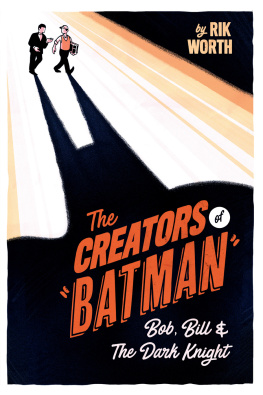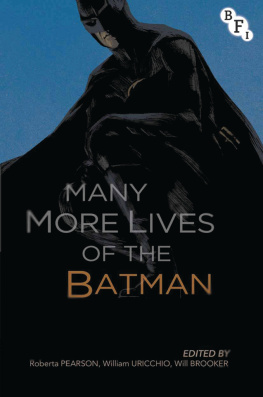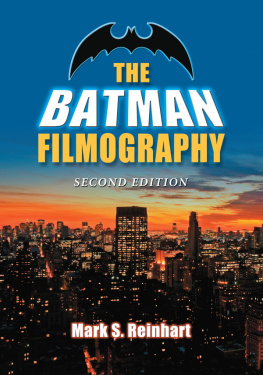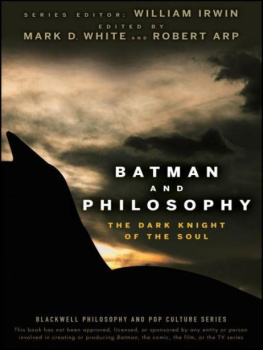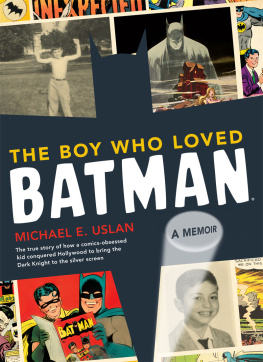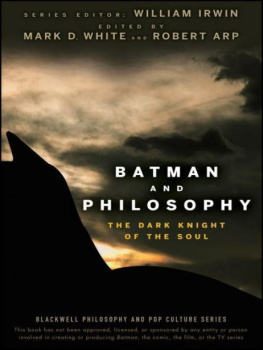Copyright 2005, 2009 , 2011 Julian Darius. Batman and related characters a re trademarks of DC Comics 2011 .
Kindle edition, January . First print edition (as Batman Begins and the Comics ) , September 2005. S econd print edition, July 2009 . Revised second print edition, November 2011.
All rights reserved by the author. Except for brief excerpts used for review or scholarly purposes, no part of this book may be reproduced in any manner whatsoever, including electronic, without express written consent of the author.
Cover by Kevin Colden. Design by Julian Darius. Interior art is copyright DC Comics; please visit dccomics.com .
Published by Sequart Research & Literacy Organization . Edited by Mike Phillips and Richard Bensam with Amy E. Dean .
For more information about other titles in this series, visit Sequart.org/books .
Material in this volume has previously appeared, in part and in previous editions, on Sequart. org .
Introduction
Upon its release, the verdict on Batman Begins was overwhelmingly positive : fans and critics alike declared it not only a fine film in its own right but the finest Batman film ever made.
This was no small feat. While the previous Batman film franchise ended in the late 1990s , after the poor critical reception of 1995s Batman Forever and the near universal condemnation of 1997s Batman and Robin ( both directed by Joel Schumacher ) , we must remember the success of Tim Burtons 1989 Batman and, to a lesser extent, 1992s Batman Returns . 1989 s Batman , in particular, won critical acclaim and is fondly remembered . It helped launch Tim Burtons career into super-stardom, spurred merchandising success for the character , and brought many new readers to comic books. Not to mention the two Batman movie serials produced by Columbia Pictures in the 1940s, the campy 1960s Batman TV show that spawned a theatrical film in 1966, and the various animated versions of Batman, including straight-to- DVD movies and 1993 s theatrically-released Batman: Mask of the Phantasm . Yet Christopher Nolans Batman Begins has not only been hailed as superior to all of these films but is likely to remain the definitive cinematic look at Batmans origins if not the definitive Batman origin in any medium for some considerable time to come.
Batman Begins also spawned a certain sequel on e that redefined the comic-book blockbuster movie. Most fans and critics praised 2008s The Dark Knight as superior in turn to Batman Begins , and it more than doubled the originals box office take. A lot of factors contributed to this success, but one was certainly the respect accorded Batman Begins , which sold briskly on DVD and attracted large audiences when aired on cable. Batman Begins built the foundation for The Dark Knight , and the original did the hard work of establishing the characters that the second film could then use in a more explosive, unfettered storyline.
But Batman Begins isnt just the forerunner to The Dark Knight . Its arguably the superior of the two: a more controlled film than its more popular sequel. More than any other cinematic appearance by the crimefighter and his supporting cast , Batman Begins carefully grounds Batman in reality, painstakingly establishing the character in a realistic milieu and in a story featuring a classic three-act dramatic structure. It may not be as fun as The Dark Knight , but it remains a major film in its own right.
Given all of this, it is just and right that we should take the time to examine the film and its comic- book inspirations. Screenwriter David S. Goyer offered his expertise as a comics fan to director Christopher Nolan . Goyer had actually written comic- book scripts for DC Comics (including issues of Starman and JSA ) ; he had also written and directed motion pictures based on other comics properties, including the trilogy of films about the Marvel Comics vampire hunter Blade. ( When Batman Begins premiered, he was also working on film treatment for the DC character Flash , though this failed to pan out.)
F aithful in spirit to the Batman mythos of the comics , Batman Begins succeeds in large part because of its knowledge of the years of writers and artists who ha d worked on Batman in the past, slowly refining the character and his origins. Several elements, from Bruce Waynes corporate role to his public persona as an irresponsible playboy, were widely familiar to comics readers as essential parts of the character, yet ha d never been seen on film. Deeply resonant critical arguments about super-heroes, long familiar to comics readers, also find a place in the film (such as when Gordon in the conclusion talks of escalation and predicts the emergence of eccentric criminals in response to Batmans presence ) . Yet d espite all these borrowings , from the literal to the thematic, Batman Begins wisely does not require any previous knowledge of Batman.
This book analyses Batman Begins , paying particular attention to the comic-book material that the film borrowed or changed. For the uninitiated , this book may serve as a guide, opening up the world of the Batman comics in an approachable way . Those already familiar with Batman will find many details about the comics ties to the film that they didnt know or realize.
But analysis in this book isnt strictly limited to the films connections to the comics. This book takes the movie apart, looking at how it works. Batman Begins is a precise bit of machinery, and every part has meaning within the whole. Those parts were fashioned after comic-book models, but its how they fit together that most distinguishes the film. And all reader s , regardless of their knowledge of comics, will benefit from a consideration of the films structure and its many thematic (and even philosophical) resonances.
Using this Book
T here are times, in the following pages, in which I will criticize as well as praise certain elements of Batman Begins . No film (n or any other work of art ) is perfect and that discussion, even including debate about these imperfections, aids our understanding and appreciation.
In places, I have had to condense description of other text s to save space in a book that is, after all, about Batman Begins . This simply isnt the place to recount every single comic-book story showing Batman battling the Scarecrow, for example. My apologies in advance to those whose favorite stories are omitted .
In the scene-by-scene annotations that follow , I have divided the film into acts and scenes and sometimes even sections of scenes. These divisions are, to varying degrees, arbitrary. After all, the term scene comes from theatre and, as applied to cinema, is not at all precise. My own such divisions of the film are not intended as definitive, but rather as necessary and convenient references.
On the Second Edition
I first wrote this book in the summer of 2005, immediately following the films release. I had originally envisioned a much smaller work, something around 80 pages. The book grew into more than twice that size. I t was published in time for the films DVD release, probably the first time in history a critical book on a film appeared so quickly.
Since that time, Sequart has grown considerably, and its books have become more sophisticated . This second edition has a new cover, a smoother look and feel , interior illustrations , and a substantially revised text. The chapter on Year One has been the most expanded, and the text is thus able to include references to Nolans masterful film The Prestige (made between Batman Begins and The Dark Knight , and also starring Christian Bale and Michael Caine ), to The Dark Knight itself, to changes in the Batman comics since 2005.



